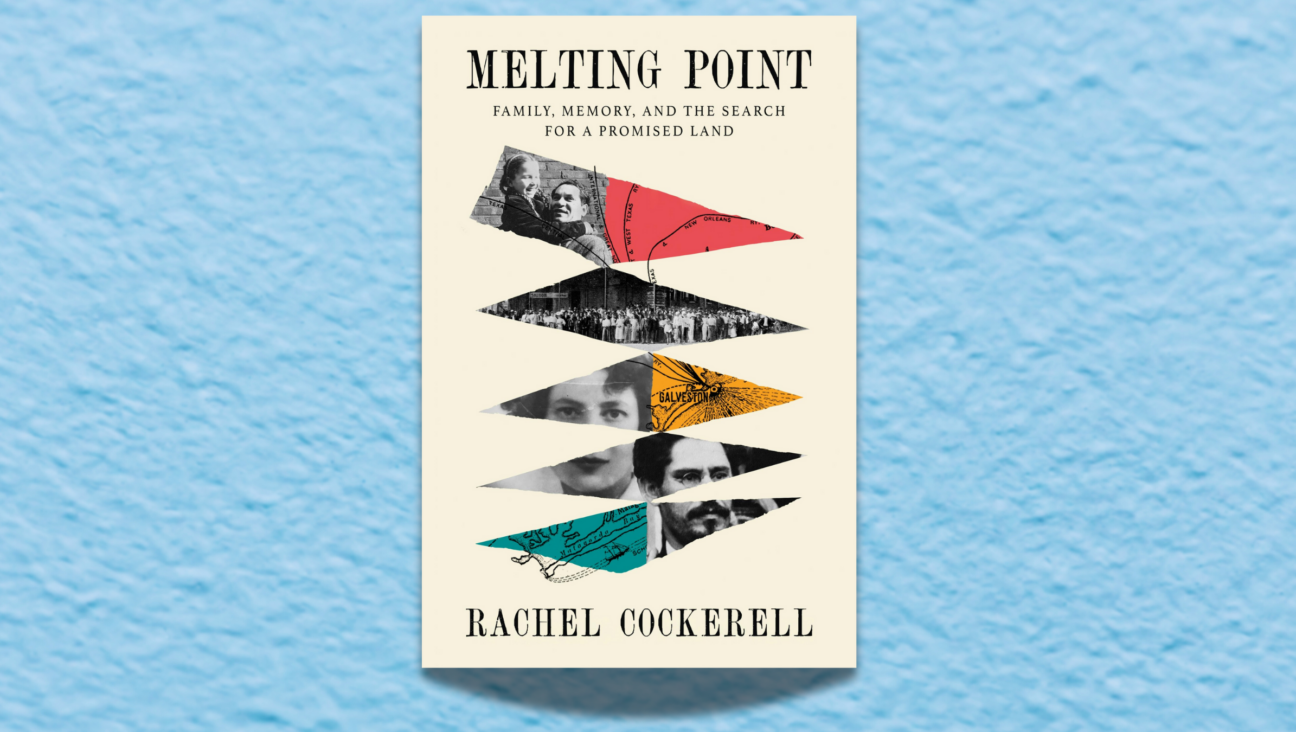Double Trouble: Two Newish Novels Sport Eerily Similar Covers

Here’s a situation that harkens back to flipping through children’s magazines in my pediatrician’s office waiting room: What’s the difference between these two pictures?
Lucinda Rosenfeld’s “I’m So Happy For You” (Back Bay Books, July 2009) and Laurie Graff’s “The Shiksa Syndrome” (Broadway Books, October, 2008) may have hit shelves more than a year apart, but the novels sport practically identical covers: The posteriors of youngish women with longish fingers crossed behind their backs suggesting inner cores of mischief and chicanery. Both cover girls are dressed in fiery colors (reds and oranges) and are standing in front of cooling robin egg blue backgrounds.
“Sometimes it just sort of happens,” said Caroline Sill, Laurie Graff’s publicist at Random House.
Though the jackets were designed by different teams, they both boldly scream chick lit, despite what’s inside. Sill agrees that the books are quite different in nature, and says Graff was also comforted by that fact.
Rosenfeld’s publicist at Little Brown, Sabrina Callahan, said that the twin covers are likely a coincidence, and offered that women’s fiction cover art tends to rely on a specific look.
What look? Girl-friendly dismemberment with mystery? No frilly, insulting pinks here, rather, a motif still meant to send men running in the other direction, despite heady blurbs or glowing reviews. Men might even enjoy reading these books, but we’ll never know thanks to these covers that practically beg them not to buy.
Much has been made of fiction written by women with dismembered ladies on the book jackets. The Philadelphia Inquirer’s Karen Heller calls these covers “visual splenda”, while posing the important question that I, too, have wondered: How do you choose a book by its cover if all the covers look alike? I’m all for recycling, but aren’t there enough cover designs to go around without reuse? And why do designs of chopped up women continue to proliferate? Do headless bodies sell more books?
The innards of these novels are quite different than one another, despite the sameness of the packaging that might cause a prospective reader to buy the wrong one. In “I’m So Happy For You,” Rosenfeld plumbs the murky depths of female friendship in all of its heroism and green-eyed jealousy. Sex is everywhere. Getting pregnant is a reflection of character. Men have limber fingers and smell like lavender and scotch.
Graff’s novel, which is out in paperback this week, opens with Aimee Albert (the blonde whom we can assume is Jewish, since that’s her wearing the six-pointed star charm) watching a Christmas ham-carving with her goyishe boyfriend shortly before he dumps her. When a dashing Jewish man mistakes her for a non-Jewish woman, she doesn’t correct him and what ensues includes no small measure of lying, stereotyping, and classic Upper West Side guilt. The tagline seems illogical, “Do shiksas really have more fun? Only a Jewish girl knows for sure.”
But what do I know? I’m just a Jewish gal looking for a book to read.
The Forward is free to read, but it isn’t free to produce

I hope you appreciated this article. Before you go, I’d like to ask you to please support the Forward.
Now more than ever, American Jews need independent news they can trust, with reporting driven by truth, not ideology. We serve you, not any ideological agenda.
At a time when other newsrooms are closing or cutting back, the Forward has removed its paywall and invested additional resources to report on the ground from Israel and around the U.S. on the impact of the war, rising antisemitism and polarized discourse.
This is a great time to support independent Jewish journalism you rely on. Make a gift today!
— Rachel Fishman Feddersen, Publisher and CEO
Support our mission to tell the Jewish story fully and fairly.
Most Popular
- 1

Fast Forward Ye debuts ‘Heil Hitler’ music video that includes a sample of a Hitler speech
- 2

Opinion It looks like Israel totally underestimated Trump
- 3

Culture Is Pope Leo Jewish? Ask his distant cousins — like me
- 4

Fast Forward Student suspended for ‘F— the Jews’ video defends himself on antisemitic podcast
In Case You Missed It
-

Fast Forward For the first time since Henry VIII created the role, a Jew will helm Hebrew studies at Cambridge
-

Fast Forward Argentine Supreme Court discovers over 80 boxes of forgotten Nazi documents
-

News In Edan Alexander’s hometown in New Jersey, months of fear and anguish give way to joy and relief
-

Fast Forward What’s next for suspended student who posted ‘F— the Jews’ video? An alt-right media tour
-
Shop the Forward Store
100% of profits support our journalism
Republish This Story
Please read before republishing
We’re happy to make this story available to republish for free, unless it originated with JTA, Haaretz or another publication (as indicated on the article) and as long as you follow our guidelines.
You must comply with the following:
- Credit the Forward
- Retain our pixel
- Preserve our canonical link in Google search
- Add a noindex tag in Google search
See our full guidelines for more information, and this guide for detail about canonical URLs.
To republish, copy the HTML by clicking on the yellow button to the right; it includes our tracking pixel, all paragraph styles and hyperlinks, the author byline and credit to the Forward. It does not include images; to avoid copyright violations, you must add them manually, following our guidelines. Please email us at [email protected], subject line “republish,” with any questions or to let us know what stories you’re picking up.















